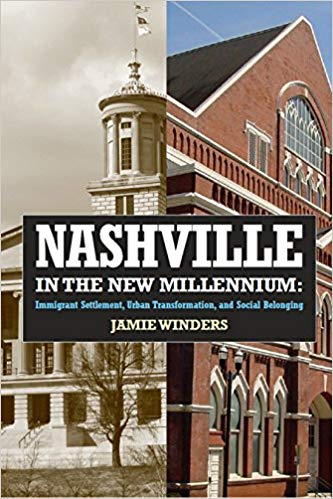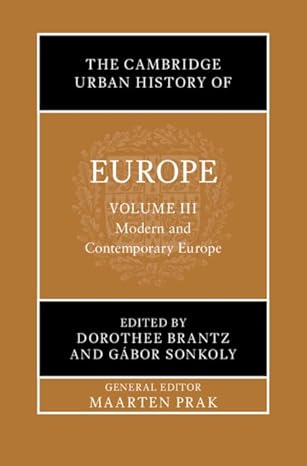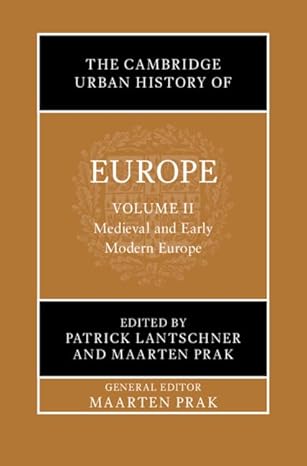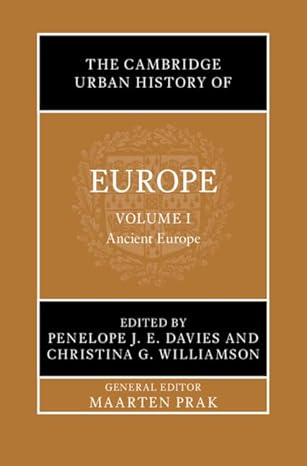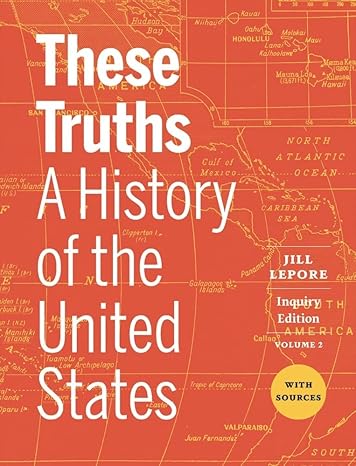Beginning in the 1990s, the geography of Latino migration to and within the United States started to shift. Immigrants from Central and South America increasingly bypassed the traditional gateway cities to settle in small cities, towns, and rural areas throughout the nation, particularly in the South. One popular new destination—Nashville, Tennessee—saw its Hispanic population increase by over 400 percent between 1990 and 2000. Nashville, like many other such new immigrant destinations, had little to no history of incorporating immigrants into local life. How did Nashville, as a city and society, respond to immigrant settlement? How did Latino immigrants come to understand their place in Nashville in the midst of this remarkable demographic change? In Nashville in the New Millennium, geographer Jamie Winders offers one of the first extended studies of the cultural, racial, and institutional politics of immigrant incorporation in a new urban destination. Moving from schools to neighborhoods to Nashville’s wider civic institutions, Nashville in the New Millennium details how Nashville’s long-term residents and its new immigrants experienced daily life as it transformed into a multicultural city with a new cosmopolitanism. Using an impressive array of methods, including archival work, interviews, and participant observation, Winders offers a fine-grained analysis of the importance of historical context, collective memories and shared social spaces in the process of immigrant incorporation. Lacking a shared memory of immigrant settlement, Nashville’s long-term residents turned to local history to explain and interpret a new Latino presence. A site where Latino day laborers gathered, for example, became a flashpoint in Nashville’s politics of immigration in part because the area had once been a popular gathering place for area teenagers in the 1960s and 1970s. Teachers also drew from local historical memories, particularly the busing era, to make sense of their newly multicultural student body. They struggled, however, to help immigrant students relate to the region’s complicated racial past, especially during history lessons on the Jim Crow era and the Civil Rights movement. When Winders turns to life in Nashville’s neighborhoods, she finds that many Latino immigrants opted to be quiet in public, partly in response to negative stereotypes of Hispanics across Nashville. Long-term residents, however, viewed this silence as evidence of a failure to adapt to local norms of being neighborly. Filled with voices from both long-term residents and Latino immigrants, Nashville in the New Millennium offers an intimate portrait of the changing geography of immigrant settlement in America. It provides a comprehensive picture of Latino migration’s impact on race relations in the country and is an especially valuable contribution to the study of race and ethnicity in the South.
چکیده فارسی
در آغاز دهه 1990، جغرافیای مهاجرت لاتین به ایالات متحده و داخل آن شروع به تغییر کرد. مهاجران از آمریکای مرکزی و جنوبی به طور فزاینده ای شهرهای دروازه سنتی را دور می زدند تا در شهرهای کوچک، شهرک ها و مناطق روستایی در سراسر کشور، به ویژه در جنوب مستقر شوند. یکی از مقاصد جدید محبوب - نشویل، تنسی - شاهد افزایش بیش از 400 درصدی جمعیت اسپانیایی تبار آن بین سالهای 1990 و 2000 بود. نشویل، مانند بسیاری دیگر از مقاصد مهاجر جدید، سابقه چندانی در ادغام مهاجران در زندگی محلی نداشت. نشویل، به عنوان یک شهر و جامعه، چگونه به اسکان مهاجران واکنش نشان داد؟ چگونه مهاجران لاتین تبار جایگاه خود را در نشویل در میان این تغییر جمعیتی قابل توجه درک کردند؟ در نشویل در هزاره جدید، جغرافیدان جیمی ویندرز یکی از اولین مطالعات گسترده درباره سیاست های فرهنگی، نژادی و نهادی ادغام مهاجران در یک مقصد شهری جدید را ارائه می دهد. نشویل در هزاره جدید با حرکت از مدارس به محلهها و نهادهای مدنی گستردهتر نشویل، چگونگی تجربه ساکنان طولانیمدت نشویل و مهاجران جدید آن را با تبدیل شدن به شهری چندفرهنگی با جهانوطنی جدید، شرح میدهد. ویندرز با استفاده از مجموعهای چشمگیر از روشها، از جمله کار بایگانی، مصاحبه، و مشاهدات مشارکتکننده، تحلیل دقیقی از اهمیت بافت تاریخی، خاطرات جمعی و فضاهای اجتماعی مشترک در فرآیند ادغام مهاجران ارائه میدهد. ساکنان طولانی مدت نشویل که خاطره مشترکی از اسکان مهاجران ندارند، برای توضیح و تفسیر حضور جدید لاتین به تاریخ محلی روی آوردند. برای مثال، سایتی که کارگران روزمزد لاتین تبار در آن جمع میشدند، تا حدودی به دلیل اینکه این منطقه زمانی محل تجمع نوجوانان منطقه در دهههای 1960 و 1970 بود، تبدیل به نقطهای در سیاستهای مهاجرتی نشویل شد. معلمان همچنین از خاطرات تاریخی محلی، بهویژه دوران اتوبوسرانی، برای درک جامعه چندفرهنگی دانشآموزی خود استفاده کردند. با این حال، آنها تلاش کردند تا به دانشجویان مهاجر کمک کنند تا با گذشته نژادی پیچیده منطقه ارتباط برقرار کنند، به ویژه در طول درس های تاریخ در دوره جیم کرو و جنبش حقوق مدنی. وقتی ویندرز به زندگی در محلههای نشویل روی میآورد، متوجه میشود که بسیاری از مهاجران لاتین تبار ترجیح دادهاند در مکانهای عمومی ساکت باشند، تا حدی در پاسخ به کلیشههای منفی از اسپانیاییها در سراسر نشویل. با این حال ساکنان طولانی مدت این سکوت را دلیلی بر عدم انطباق با هنجارهای محلی همسایگی می دانستند. نشویل در هزاره جدید پر از صداهایی از ساکنان طولانی مدت و مهاجران لاتین تبار، تصویری صمیمی از تغییر جغرافیای اسکان مهاجران در آمریکا ارائه می دهد. این تصویر جامعی از تأثیر مهاجرت لاتین بر روابط نژادی در کشور ارائه میکند و کمکی ویژه به مطالعه نژاد و قومیت در جنوب است.
ادامه ...
بستن ...
Ebook details:
عنوان: Nashville in the New Millennium: Immigrant Settlement, Urban Transformation, and Social Belonging
نویسنده: Jamie Winders
ناشر: Russell Sage Foundation (April 1, 2013)
زبان: English
شابک: 0871549336, 978-0871549334
حجم: 5 Mb
فرمت: True Pdf
ادامه ...
بستن ...
